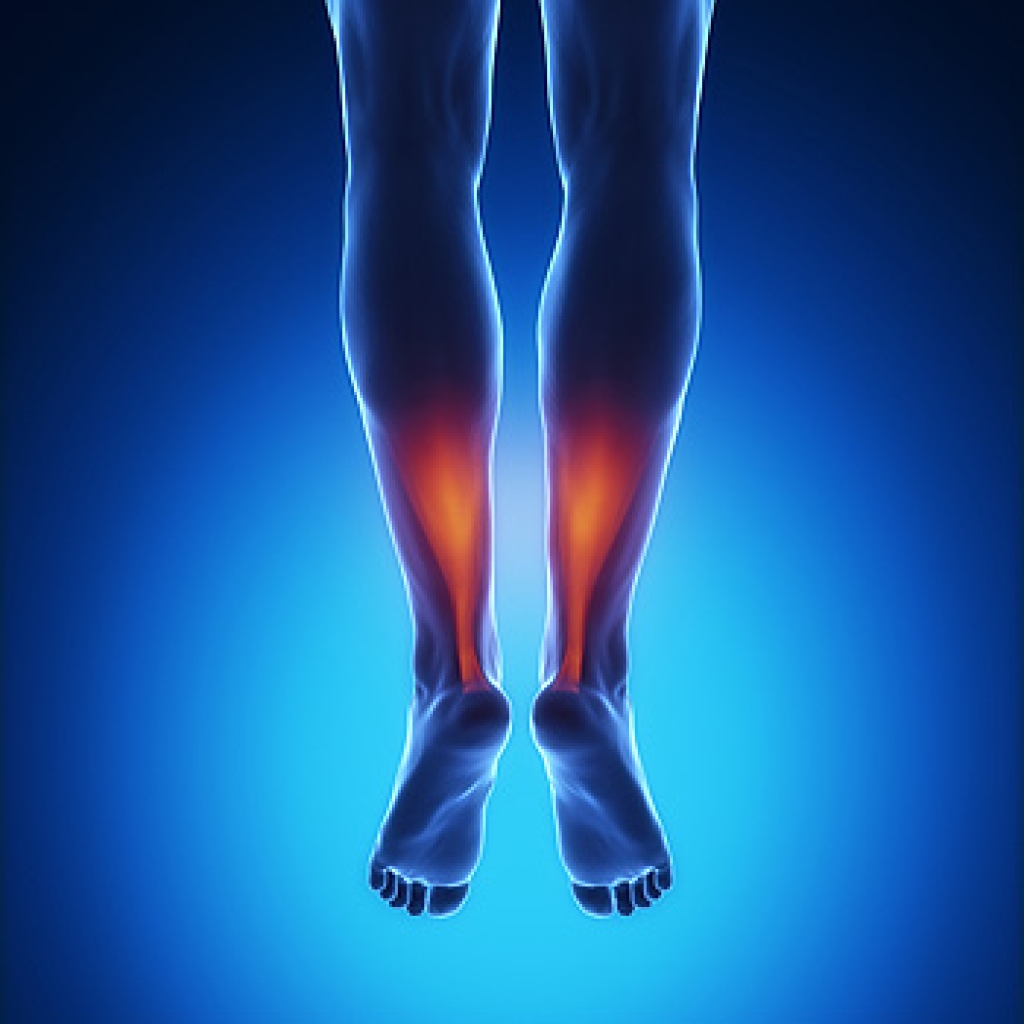 There are multiple conditions that can cause pain in the Achilles tendon, a tough band of tissue that connects the calf muscles to the heel bone. Achilles tendonitis is an inflammation of the tendon, and tends to have a quick onset and pain that may last up to six weeks. Achilles tendinosis is a degeneration of the tendon and is noninflammatory. It is often caused by overuse. Paratenonitis is an inflammation of the tissue that surrounds the Achilles tendon. Insertional Achilles tendinopathy is the inflammation and subsequent degeneration of tendon fibers that insert on the back of the heel bone. If you are experiencing pain at the back of the ankle or in the lower calf, it is suggested that you visit a podiatrist to receive a proper diagnosis and treatment.
There are multiple conditions that can cause pain in the Achilles tendon, a tough band of tissue that connects the calf muscles to the heel bone. Achilles tendonitis is an inflammation of the tendon, and tends to have a quick onset and pain that may last up to six weeks. Achilles tendinosis is a degeneration of the tendon and is noninflammatory. It is often caused by overuse. Paratenonitis is an inflammation of the tissue that surrounds the Achilles tendon. Insertional Achilles tendinopathy is the inflammation and subsequent degeneration of tendon fibers that insert on the back of the heel bone. If you are experiencing pain at the back of the ankle or in the lower calf, it is suggested that you visit a podiatrist to receive a proper diagnosis and treatment.
Achilles tendon injuries need immediate attention to avoid future complications. If you have any concerns, contact one of our podiatrists of Houston Foot and Ankle. Our doctors can provide the care you need to keep you pain-free and on your feet.
What Is the Achilles Tendon?
The Achilles tendon is a tendon that connects the lower leg muscles and calf to the heel of the foot. It is the strongest tendon in the human body and is essential for making movement possible. Because this tendon is such an integral part of the body, any injuries to it can create immense difficulties and should immediately be presented to a doctor.
What Are the Symptoms of an Achilles Tendon Injury?
There are various types of injuries that can affect the Achilles tendon. The two most common injuries are Achilles tendinitis and ruptures of the tendon.
Achilles Tendinitis Symptoms
- Inflammation
- Dull to severe pain
- Increased blood flow to the tendon
- Thickening of the tendon
Rupture Symptoms
- Extreme pain and swelling in the foot
- Total immobility
Treatment and Prevention
Achilles tendon injuries are diagnosed by a thorough physical evaluation, which can include an MRI. Treatment involves rest, physical therapy, and in some cases, surgery. However, various preventative measures can be taken to avoid these injuries, such as:
- Thorough stretching of the tendon before and after exercise
- Strengthening exercises like calf raises, squats, leg curls, leg extensions, leg raises, lunges, and leg presses
If you have any questions please feel free to contact our offices located in Kingwood, Humble, The Woodlands, and Conroe, TX . We offer the newest diagnostic tools and technology to treat your foot and ankle needs.
